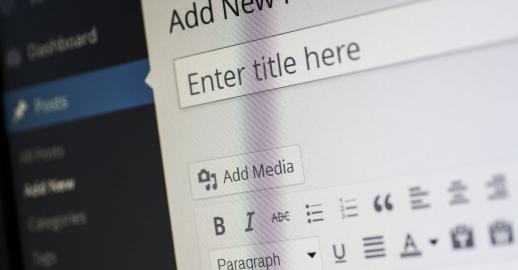How to Align Your SEO Content with User Intent

8th March 2019
When was the last time you reviewed your content in terms of user intent? We’re going to take a look at why you should consider the intent and buying stage of your audience when creating content, and how you can make sure each of your website pages is attracting users at different stages of the marketing funnel.
How to Identify Intent
You can often identify user intent based on the keywords users are searching for. Let’s take a look at two different lists of keywords and the intent behind them.
Gathering Information
Some words such as “why” and “how” indicate that the user is a little further away from buying at the moment. Consider the following search terms:
- Why do I need a smartphone
- How do smartphones work
- Which smartphone should I get
- What smartphone should I get
- Compare smartphone brands
- Best smartphones
- Top smartphones
If a user searches for any of these phrases, do you think that they are ready to buy? It sounds more like they are gathering information and don’t know what they want yet.
Ready to Buy
Compare the above search terms to these:
- Buy smartphone
- Shop for women’s shoes
- Apply for credit card
- Book restaurant near me
- Reserve cinema tickets
- Rent a van
- Hire a car
These are action words that suggest that the customer is ready to make a purchase.
Why is User Intent Important?
When you’re creating content for your website, you need to take user intent into consideration. It is a good idea to group keywords by intention as above, and then build your content around your audience’s needs and their position in the marketing funnel. If you are creating a landing page with the purpose of convincing visitors to make a purchase, avoid targeting the abstract queries in the first list – someone asking “why do I need this product?” isn’t going to buy yet, so there’s no point trying to bring them to a landing page with limited background information and a big “buy now” button.
Similarly, why use keywords from the second list in your informative articles? Anyone using these keywords is ready to purchase, so you need a landing page targeted towards those queries where they can immediately pick out what they need and head to the checkout.
User Intent and PPC
This way of creating content geared towards user intent is good SEO and CRO sense, but it can also be applied to your PPC accounts. Consider the keywords you are targeting and the landing pages you are then sending people to – do your landing pages align with the intent behind each query? If you run an ecommerce business, you’re more likely to want to target words in the second list rather than the first in your PPC, as you’ll be spending money on people who are ready to convert. Of course, you should put some SEO power behind content targeting all customers and keywords, regardless of intent or decision-making stage.
Aligning Your Content with User Intent
We have established that users in different stages of the decision-making process need different information. So how do we provide each of them with the right content to encourage conversions? Let’s take a look at the marketing funnel. There are a few different versions, but let’s say for now that it looks like this:
- Awareness: The customer is aware of your brand or product but may not know very much about it or think that they need to buy it.
- Consideration: The customer still doesn’t know much about the product but thinks they might want or need it. They need some more information before they decide they definitely want to buy.
- Intent: The customer definitely intends to buy the product, but they are unsure exactly which one they want to buy and need more information about the different options.
- Evaluation: The customer is learning about the product and learning about it or comparing models to decide which one they would like to purchase.
- Purchase: The customer has made their decision and is ready to buy a particular product.
Now that we have an idea of the different stages a customer might be at in their decision-making process, we can consider how we might target customers at each of these stages. Let’s stick with smartphones as an example.
- Awareness: The customer is aware of smartphones, and let’s say they have heard of a couple of the main brands dominating the market. They don’t know if they need one at the moment.
- Consideration: The customer has perhaps seen someone else’s smartphone in action and they like that they can play games and go on the internet on it. They don’t know much about how it works, but they are considering buying one.
- Intent: Knowing a little more about the different features, the customer has decided they would love to buy themselves a smartphone. They need some more information so they can decide which one to buy. They may have already settled on a particular brand but not a specific model.
- Evaluation: The customer is considering the features they would like their smartphone to have, and they are debating between brands or models.
- Purchase: The customer has decided which smartphone they would like to buy, and they are ready to make the purchase.
We now have an idea of the customers’ thought processes at each stage of the funnel. How can we align our content with these stages? The table below shows each stage, along with a description of the type of content you may want to show a customer at this stage, the keywords you would ideally be targeting (grouped by intention), and any links you should include to help the customer get to the next stage and ultimately make their decision and purchase.
Stage | Content | Keyword Ideas | Links |
Awareness | Blog posts or articles explaining why smartphones are useful, why the customer might want one, or what you can do with them | Why do I need a smartphone, what is a smartphone, what can you do with a smartphone | Link to blog posts with more information on features and models (consideration stage) |
Consideration | Blog posts or articles explaining common smartphone features, why smartphones are better than other mobile phones, or why the customer should choose a particular brand | Why buy Samsung smartphone, why are smartphones better than regular phones, what smartphone features do I need | Link to model comparison pages or articles explaining benefits of different models (intent/evaluation stages) |
Intent/ Evaluation | Blog posts or articles explaining features and benefits of several models, or landing pages where customers can compare smartphone models side by side, or a product listings page with some information about each model | Which smartphone should I get, compare smartphone brands, best smartphones, top smartphones, brand keywords e.g. Samsung smartphone models, which Samsung smartphone
| Link to different product pages where a customer could make a purchase if they are ready (purchase stage) |
Purchase | Landing page for specific smartphone model | Brand keywords and ready to buy keywords, e.g. Samsung Galaxy S10, buy Samsung Galaxy S10, shop Samsung Galaxy S10 | Customers should be able to click through to the desired product or add it to the basket on this page |
As you can see, I’ve suggested that the content for each stage or user intention could include links to the next step in the marketing funnel. But customers may not move down this funnel in such a linear way, so it may be that you want to introduce links to specific products and models at earlier stages or even at each stage, to potentially accelerate the decision-making process. And of course, the funnel is going to be different depending on which industry you are in and what products you are selling. For example, earlier this year I treated myself to a digital piano and some new headphones to use with it (you’re welcome, neighbours in the flats above me). I have never bought a digital piano before, and haven’t played since I had a keyboard in my teenage years. Add to that, the number of different makes and models that are on the market and all the different features they have, and you can imagine how much research I had to do before I decided which piano to buy. Compare this to when I purchased my headphones. I have bought headphones before and they have fewer features to choose from than a digital piano. So it was mainly a case of deciding how much I wanted to spend and trying them out in the shop to see which ones were the most comfortable and had the best sound for my budget. This decision-making process took days, compared to the weeks I spent looking at pianos. And that’s with me being somewhat impatient and impulsive – someone else may take much longer researching each option before they make a purchase. This is just one example of how customer thought processes and time spent at each stage may differ depending on the product or service you are offering. As you know your industry best, you’ll be able to tailor your content according to your typical customer’s journey and intent stages.
Using Intent to Generate New Content Ideas
Customer intent is important to bear in mind when you are writing content and optimising it for search. It can also help you to come up with new content ideas. You may take a look at your content and realise that you have a gap – maybe you don’t offer much information for the awareness stage of the funnel, for example. Consider what a user at this stage would need to know, the keywords they might be searching for, and how you can help them to make a purchasing decision. Remember, if you’re the one providing useful information for customers at every stage, you’re building brand awareness and your customers just might stay on your website or come back to you at a later date when they are ready to make their purchase. Position your business as useful, informative, and an industry expert, and keep those intent keywords in mind to ensure that each customer lands on a helpful page – both for their benefit and for yours.
If you would like any help with writing SEO content, get in touch with SilverDisc.






